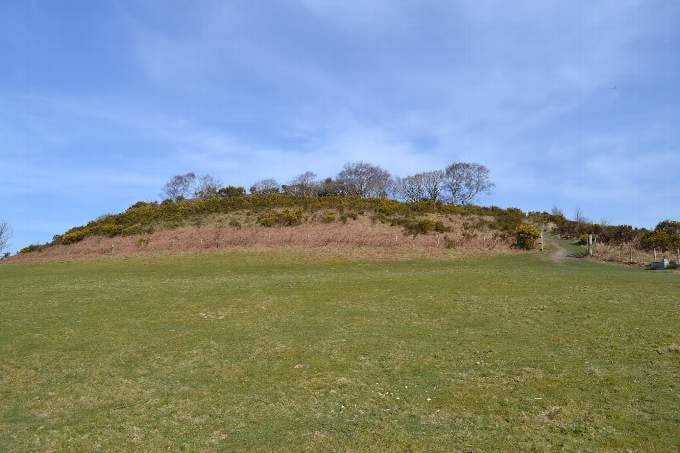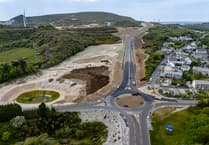A LITTLE known castle near Bodmin is among 77 historic sites in the South West which have been removed from Historic England’s At Risk register.
Cardinham Castle is one of only a few medieval castles in Cornwall, and something of a well-kept secret. It is situated amidst ancient woodland associated with tributaries of the River Fowey, in a very beautiful and secret location.
The castle was built around 1100AD for the owner of the Domesday manor, Richard Fitz Turold, one of the chief landholders in Cornwall after the Norman Conquest.
The scale of the castle and its earthworks reflect both the status of its owner and the strategic location, at the centre of Cornwall. Having been abandoned in the 14th century, Cardinham survives as impressive earthworks.
Through the hard work of the owner and with funding from Historic England, the castle has been cleared of damaging scrub and bracken and fenced to allow carefully controlled grazing. Volunteers have been carrying out a geophysical survey to find out more about this little-known site and a stile has been installed for better public access.
Whilst Cardinham Castle has been taken off the at-risk register some historic sites in our area have been added on to it.
They include the late medieval packhorse bridge at Newport near Launceston which is believed to have been built in the 15th century to serve the nearby Priory of Launceston. It straddles the River Kensey at a point where the river widens and was used as a ford. The narrow bridge has five small arches and a cobbled footway flanked by large slate slabs.
Because it only carries foot traffic, the packhorse bridge is a rare example of a monument that has survived almost unaltered. But, for the same reason, the bridge has not been regularly maintained and vegetation has grown in the masonry joints. Some of the footway’s cobbles have become loose and over the last year the bridge has suffered vandalism. Fortunately, work to construct a new footbridge beside St Thomas’s road bridge has resulted in a temporary diversion of pedestrians over the packhorse bridge and focused attention on these issues. A solution has been agreed and work has started on repairs.
Also added to the register is the churchyard cross at Lanivet, a rare example of a complete pre-Norman churchyard cross, decorated with interlace, knotwork, and plant scrolls.
The beauty and significance of Lanivet Cross are difficult to appreciate because it is engulfed by an Irish Yew which now threatens its stability. But a centenarian yew is considered special too and there is a potential conflict on how to best manage the situation. The churchwardens plan to assess the significance of both the cross and the tree and consider how to resolve the conflict in a way which will be of benefit to both.
And already on the list, but seeing good progress, is Cadsonbury, a spectacular but little-known hillfort set on a steep-sided hill above the River Lynher near Callington. There has been a gradual encroachment of vegetation over the ramparts and into the interior of the fort, and the site has been on the Heritage at Risk Register for many years.
The owners, the National Trust, have recently entered into an agreement for the site. Cadsonbury’s condition is now improving and making good progress towards being removed from the Heritage at Risk Register.




